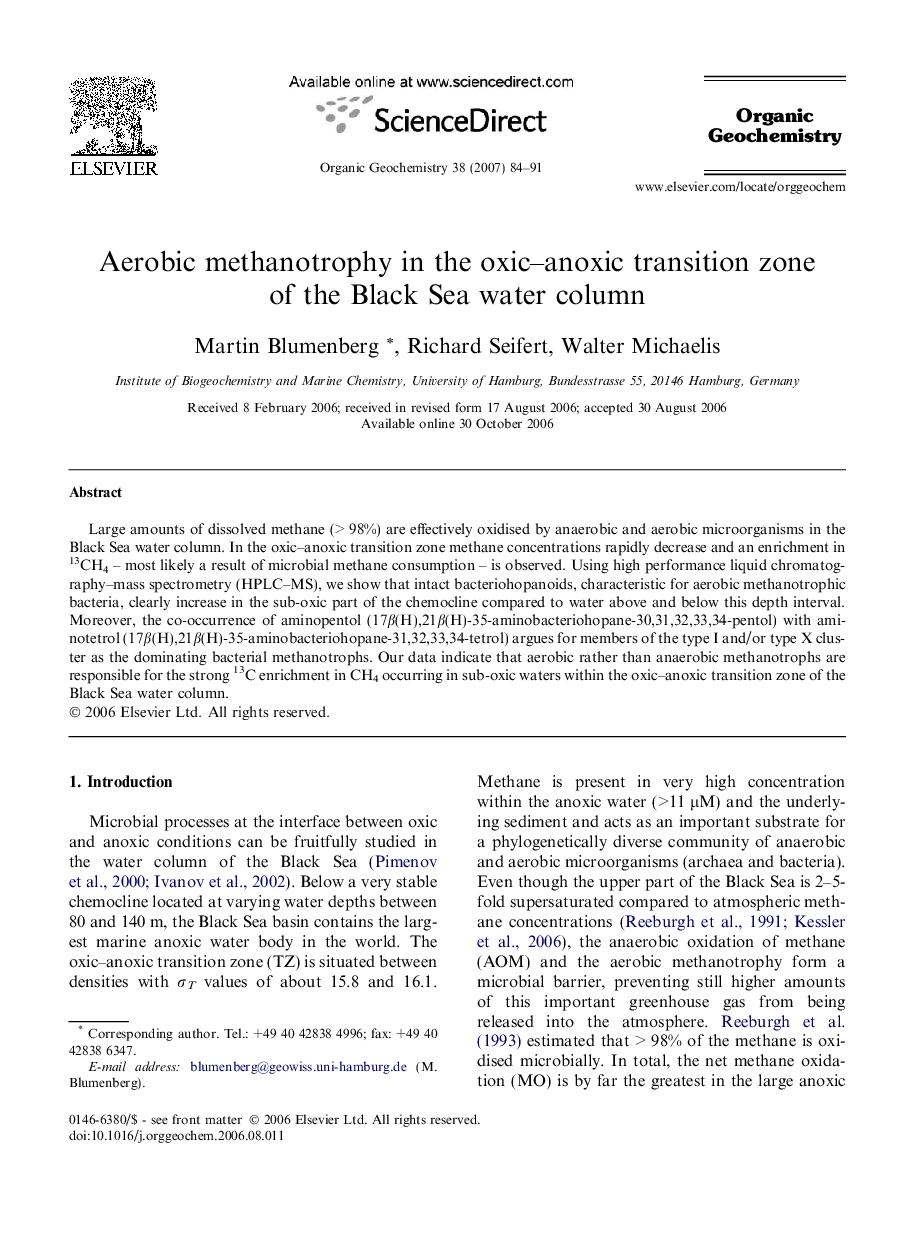| Article ID | Journal | Published Year | Pages | File Type |
|---|---|---|---|---|
| 5162117 | Organic Geochemistry | 2007 | 8 Pages |
Abstract
Large amounts of dissolved methane (> 98%) are effectively oxidised by anaerobic and aerobic microorganisms in the Black Sea water column. In the oxic-anoxic transition zone methane concentrations rapidly decrease and an enrichment in 13CH4 - most likely a result of microbial methane consumption - is observed. Using high performance liquid chromatography-mass spectrometry (HPLC-MS), we show that intact bacteriohopanoids, characteristic for aerobic methanotrophic bacteria, clearly increase in the sub-oxic part of the chemocline compared to water above and below this depth interval. Moreover, the co-occurrence of aminopentol (17β(H),21β(H)-35-aminobacteriohopane-30,31,32,33,34-pentol) with aminotetrol (17β(H),21β(H)-35-aminobacteriohopane-31,32,33,34-tetrol) argues for members of the type I and/or type X cluster as the dominating bacterial methanotrophs. Our data indicate that aerobic rather than anaerobic methanotrophs are responsible for the strong 13C enrichment in CH4 occurring in sub-oxic waters within the oxic-anoxic transition zone of the Black Sea water column.
Related Topics
Physical Sciences and Engineering
Chemistry
Organic Chemistry
Authors
Martin Blumenberg, Richard Seifert, Walter Michaelis,
